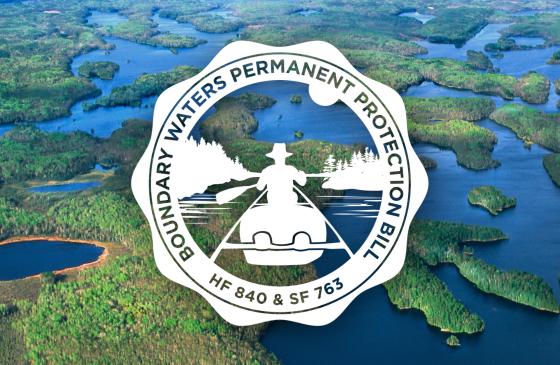Bill Summary - The Boundary Waters Permanent Protection Bill - H.F. 840 (Morrison) / S.F. 763 (Cwodzinski)
-
The Boundary Waters Permanent Protection Bill permanently protects the Boundary Waters Canoe Area Wilderness (BWCAW) and Voyageurs National Park (VNP) from the inevitable and devastating damage that would result from sulfide-ore copper mining pollution in its watershed.
-
Pollution from proposed sulfide-ore copper mining on lands upstream of the BWCAW and VNP would flow directly into the system of pristine lakes, rivers, streams, and wetlands in the Wilderness.
-
The bill permanently bans both sulfide-ore copper mining and the issuance of state permits, licenses, or leases for sulfide-ore copper mining on state-owned lands in the watershed of the BWCAW.
-
The bill is the state companion to the bipartisan Boundary Waters Protection and Pollution Prevention Act introduced in Congress by Congresswoman Betty McCollum that establishes the same permanent protections on federal lands in the Rainy River Headwaters.
-
The bill ONLY applies to sulfide-ore copper mining and does NOT prohibit or otherwise impact existing or future taconite, iron ore, sand, gravel, and granite mining.
What’s at Stake
- The BWCAW is America’s most-visited wilderness area. It contains 1.1 million acres of pristine water and unspoiled woodlands. It is a uniquely water-intensive lakeland wilderness ecosystem. Its interconnected system of lakes, rivers, streams, and wetlands set in a forested landscape provides critical habitat for fish, plants, and wildlife, including several endangered and threatened species.
- The waters of the BWCAW, some of the cleanest in America, lack buffering capacity, which leaves them uniquely vulnerable to pollutants.
- Scientific modeling and empirical evidence show overwhelmingly that sulfide-ore copper mining in the BWCAW’s watershed threatens with near certainty the destruction of the healthy, intact, and productive wilderness area that supports a full range of recreational and economic activities and is a beloved national and state treasure.
- The BWCAW is the economic lifeblood of northeastern Minnesota's lucrative tourism industry. Tourism generates $913 million in revenue per year in economic benefits and creates 17,000 jobs that support local families and businesses.
